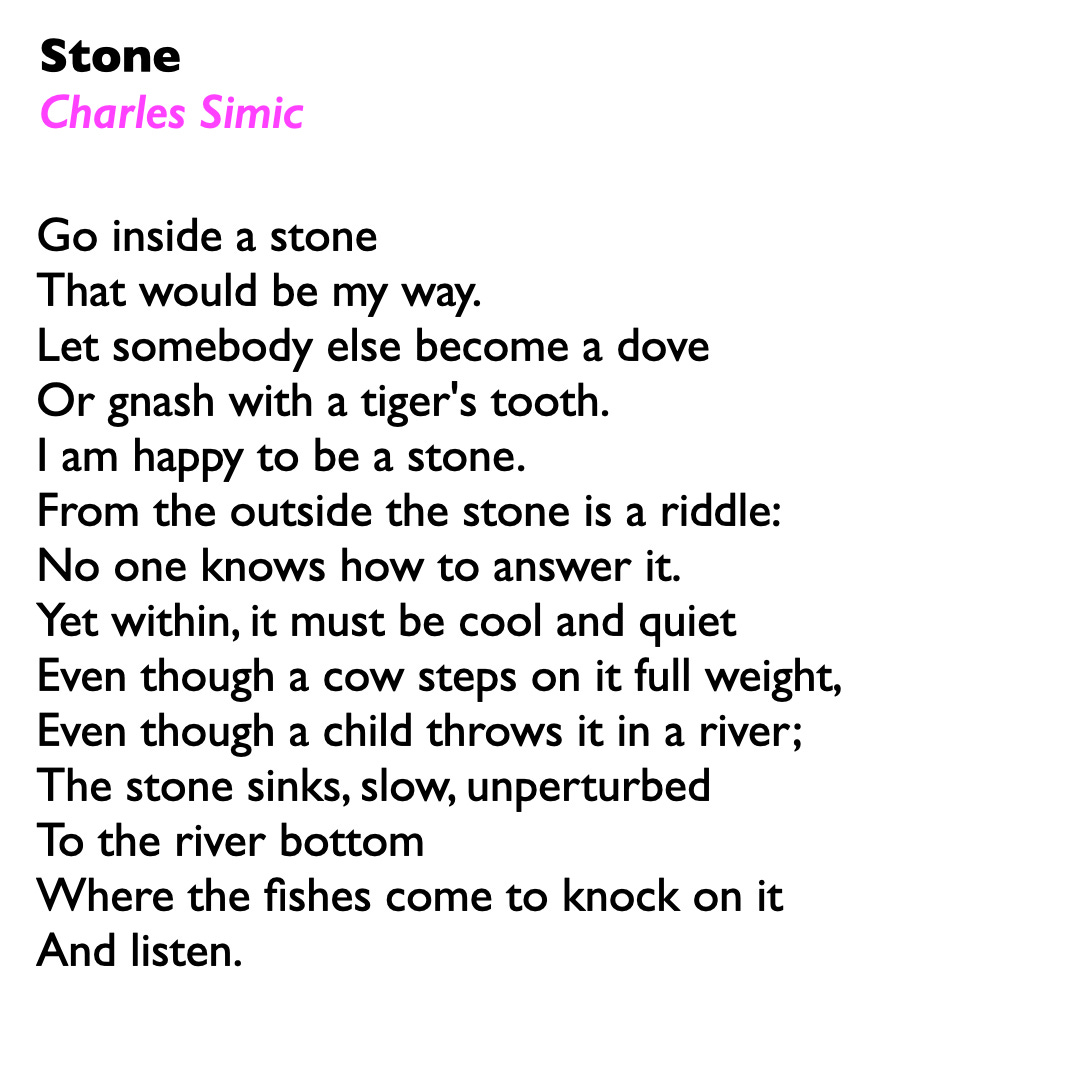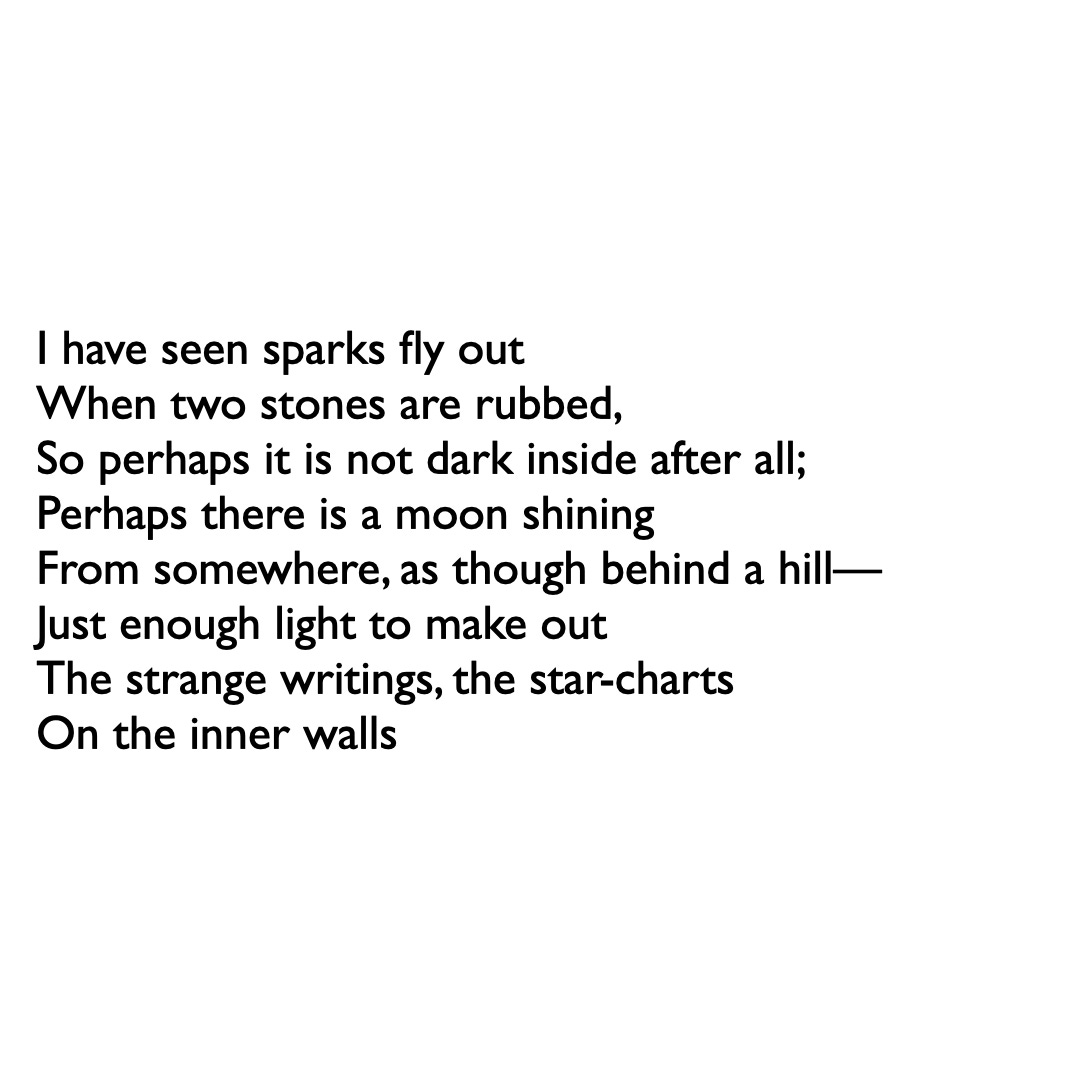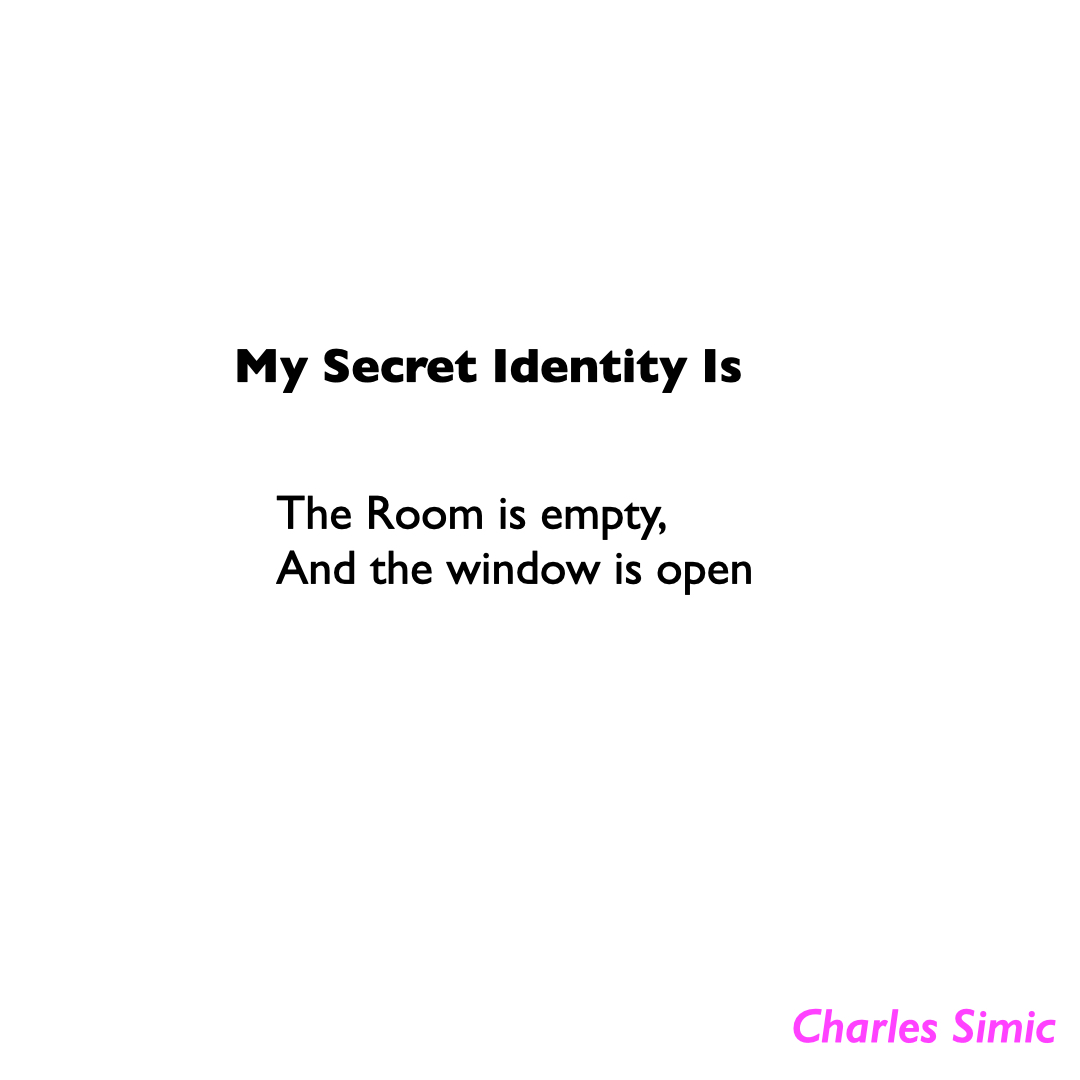There comes a point when every word that you write stares back at you. Even punctuation slips between the characters, quietly stealing the autonomy of the pen. This draught sweeps entire cities of anxiety. Language falls short, always. Every line retreats from its meaning. The more we walk towards the truth, the more we steal away from the dark assurance of certainty. As we write reality, it fades away. The poet's quest is noble not because it reaches truth, but because it finds meaning even in the futile aftertaste of epiphany.
Is this, perhaps, the same sentiment that EVR’s ‘Love as Research’ embodies in the unforgettable lines “I fumble and misquote/ as I learn more and more/ about your less and less”? I have written before about the metaphor as weakness. The assumption, outside of poetry, is that the metaphor is a tool for explanation. In other disciplines, the metaphor can become a convenient tool to avoid the labour of description. The writer finds refuge in the metaphor (“The Russian army stormed the city of Budapest”). Sometimes mixing metaphors results in complete incomprehension (“We have to weed out the cancer in the economy”). One of the attributes of the metaphor is brevity - we can say many things with the conceptual scope of a simple word or phrase.
But what about the metaphor as curiosity’s trapdoor? What about language as a frame to insight, and not the other way around? We assume that the critic uses metaphor by design. Having understood a phenomenon, the metaphor assists in communication, in bridging the gap. However, is there a possibility of insight in the metaphorical act of comparison itself? This is a very delicate balance. How does the poet know what metaphor, what image to use, and when?
I do not have answers to these complex questions. I only have poems, which are often questions, and rarely answers. I turn, now, to the poet Charles Simic who passed from this mortal coil, not more than two moons ago. Most well known poetry archives haven’t even corrected their profiles to reflect his death. He is still present. I felt Simic’s death, simply because, as a reader of his poems, I have felt the “comradeship of dream”. I quote, below, from his book “The Life of Images”.
THE FISH IS SPHINX TO THE CAT
There is a major misunderstanding in literary criticism as to how ideas get into poems. The poets, supposedly, proceed in one of these two ways: they either state their ideas directly or they find equivalents for them. What is usually called philosophical poetry seems to be either a poetry of heightened eloquence or some variety of symbolism. In each case, the assumption is that the poet knows beforehand what he or she wishes to say and the writing of the poem is the search for the most effective means of gussying up these ideas.
If this were correct, poetry would simply repeat what has been thought and said before. There would be no poetic thinking in the way Heidegger conceives of it. There would be no hope that poetry could have any relation to truth.
Simic was a master craftsman, whose precision in language was offset by a complex conversation between the image and the real. I understand what he is saying through a contemplation on form. Has it happened to you, that sometimes, when you do not know, necessarily, the end of a particular sentence, or a paragraph, the metaphor actually shows you the way? If I compare the city to a banyan tree, I may have thought only of its roots that reach from heaven to earth, or the observer standing by the side of the road, watching. But, what about the fungi at its base, passing nutrients from node to node, turning a single strand into an entire forest? Is this not a kind of transmission that is not dissimilar from, say, Wi-fi, or a rudimentary but well entrenched and organised postal service? Forgive the simplistic approximation. I borrow this idea, from a metaphor I have used before in another piece of writing.
But I hope you get my drift. I believe, that it is possible for language to precede insight. The very act of writing, for a poet, could simply be about placing seemingly disconnected fragments on the same plane. The connections emerge organically, as it, were.
Nobody knew this better than Simic.
IN A HEAD THIS OLD THERE’S A BLIND HEN THAT OCCASIONALLY FINDS A KERNEL OF CORN AND HER NAME IS LOVE
My poems (in the beginning) are like a table on which one places interesting things one has found on one’s walks: a pebble, a rusty nail, a strangely shaped root, the corner of a torn photograph, etc., . . . where after months of looking at them and thinking about them daily, certain surprising relationships, which hint at meanings, begin to appear.
These objets trouvés of poetry are, of course, bits of language. The poem is the place where one hears what the language is really saying, where the full meaning of words begins to emerge.
That’s not quite right! It’s not so much what the words mean that is crucial, but rather, what they show and reveal. The literal leads to the figurative, and inside every poetic figure of value there’s a theater where a play is in progress. The play is about gods and demons and the world in its baffling presence and variety.
In its essence an interesting poem is an epistemological and metaphysical problem for the poet.
It is against this problem of meaning that Simic wielded the image, like an open secret.
Elsewhere in “The Life of Images”, Simic writes about the resistance that many editors had to “thing poems” - poetry about mundane things. He quotes an editor’s response to a set of “object poems” - “Dear Mr. Simic . . . you’re obviously a sensible young man, so why do you waste your time by writing about knives, spoons, and forks?” Poetry doesn’t need to be about lofty phenomena like melancholy, and world peace. The seed of a poem is often planted in the clay of an image, that arrives without explanation in the poet’s mind, sometimes fully formed. At other times, a perceived image might birth a poem, or the memory of a particular detail. This is all that is needed, in my opinion. As we slowly suture reality, with the needle of language; as we go deeper, gently embroidering the “truth” with loving detail, there comes a point where we reach silence. This is the end of the poem… and the real beginning, of the image.
The poet sits before a blank piece of paper with a need to say many things in the small space of the poem. The world is huge, the poet is alone, and the poem is just a bit of language, a few scratchings of a pen surrounded by the silence of the night.
It could be that the poet wishes to tell you about his or her life. A few images of some fleeting moment when one was happy or exceptionally lucid. The secret wish of poetry is to stop time. The poet wants to retrieve a face, a mood, a cloud in the sky, a tree in the wind, and take a kind of mental photograph of that moment in which you as a reader recognize yourself. Poems are other people’s snapshots in which we recognize ourselves.
The first poem I share is a continuation of the thematic of ‘stone’. This series (on Poetly) has happened quite organically. The serendipity is curious.
The second poem is quite popular and is from his collection of prose poems “The World Doesn’t End”. Quite apt, I believe.
Note. there is no full stop…
The world doesn’t end….
I have previously shared Charles Simic’s January on Poetly, before, along with an excerpt from an interview of him.
Rest in Poetry, Charles Simic.
I hope you are doing well, and this winter is kind. If you like what you read, do consider ‘buying me a coffee’.
Note: Those, not in India, who’d like to support the work I do at Poetly, write to me - poetly@pm.me.
If you wanna share this post…





